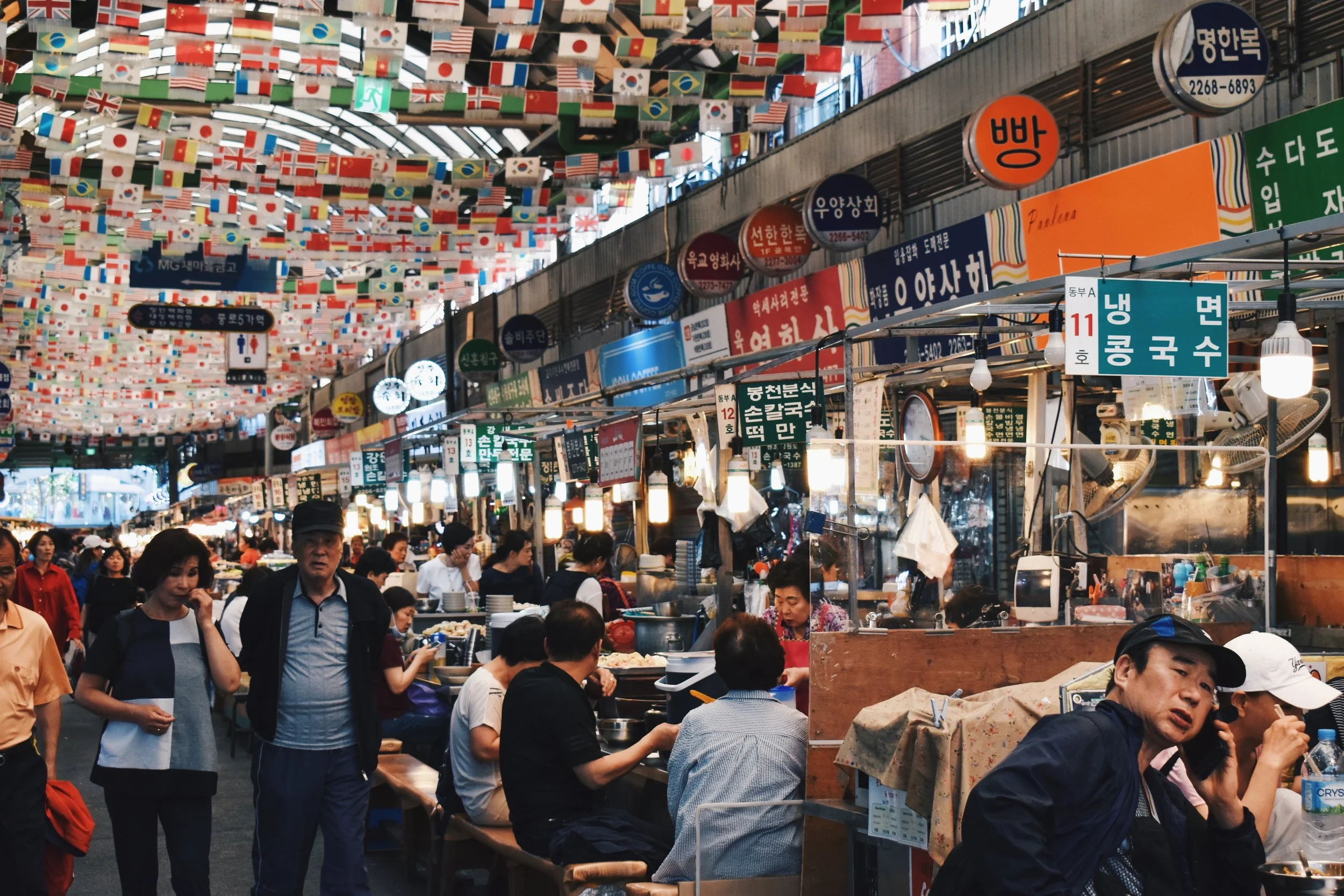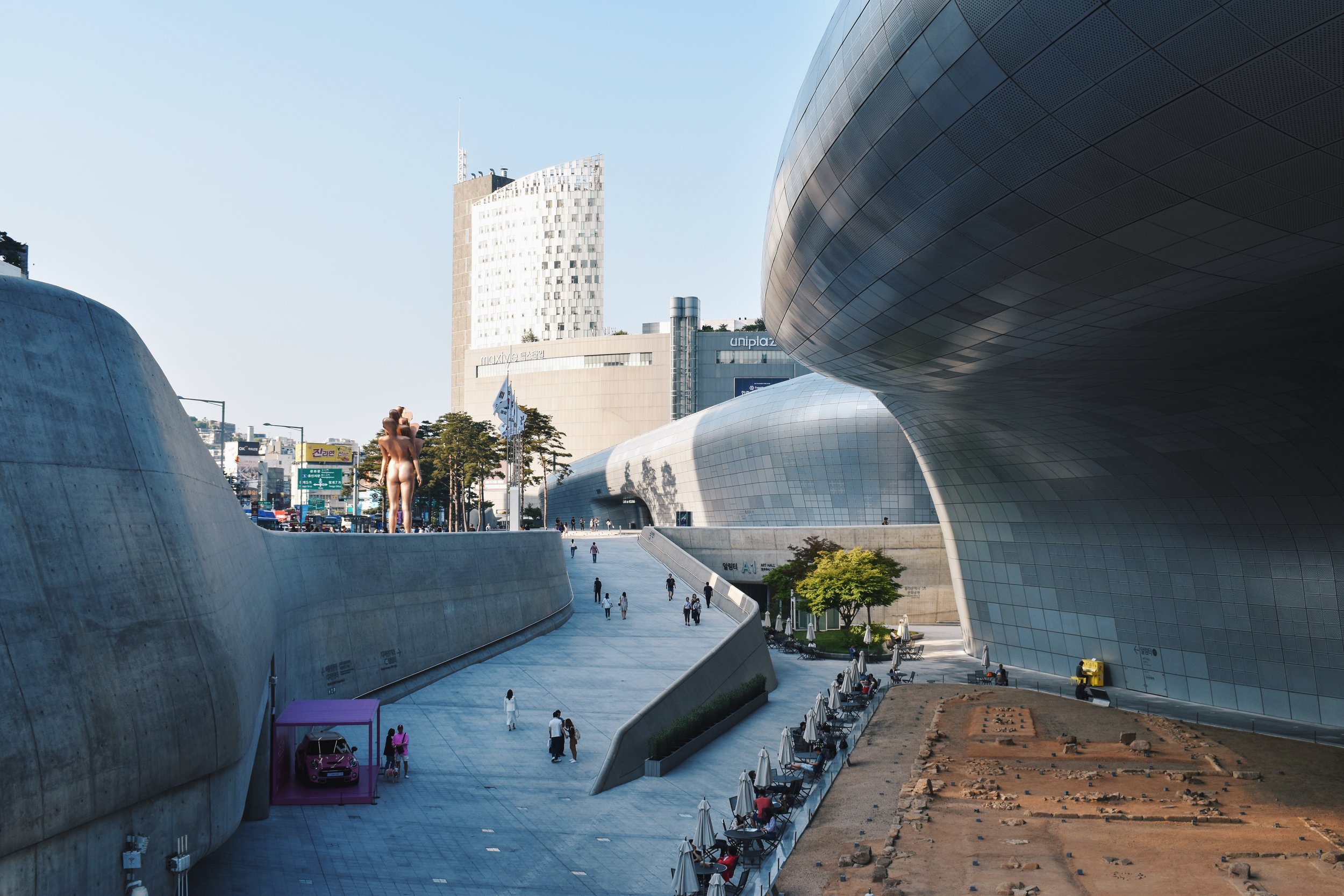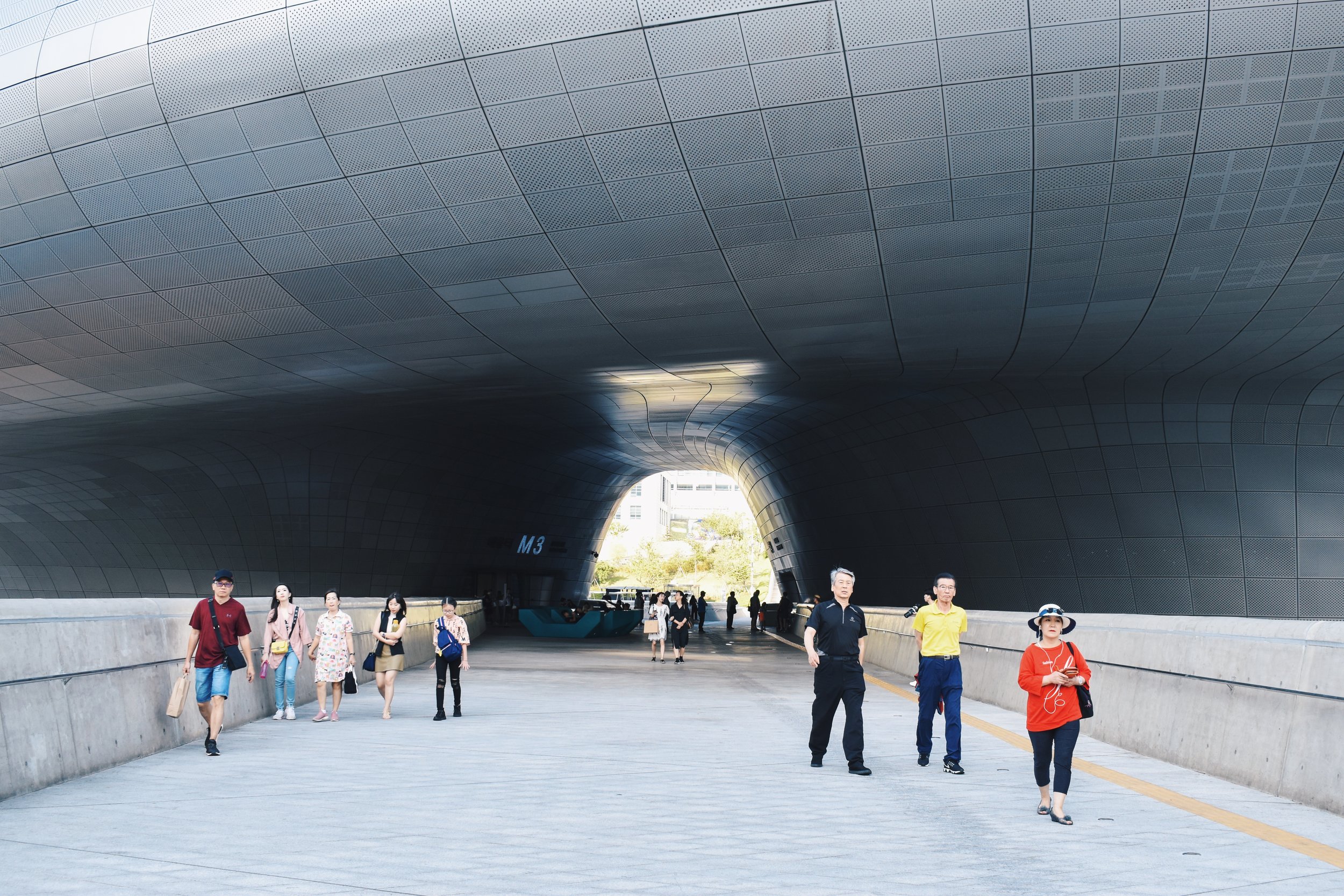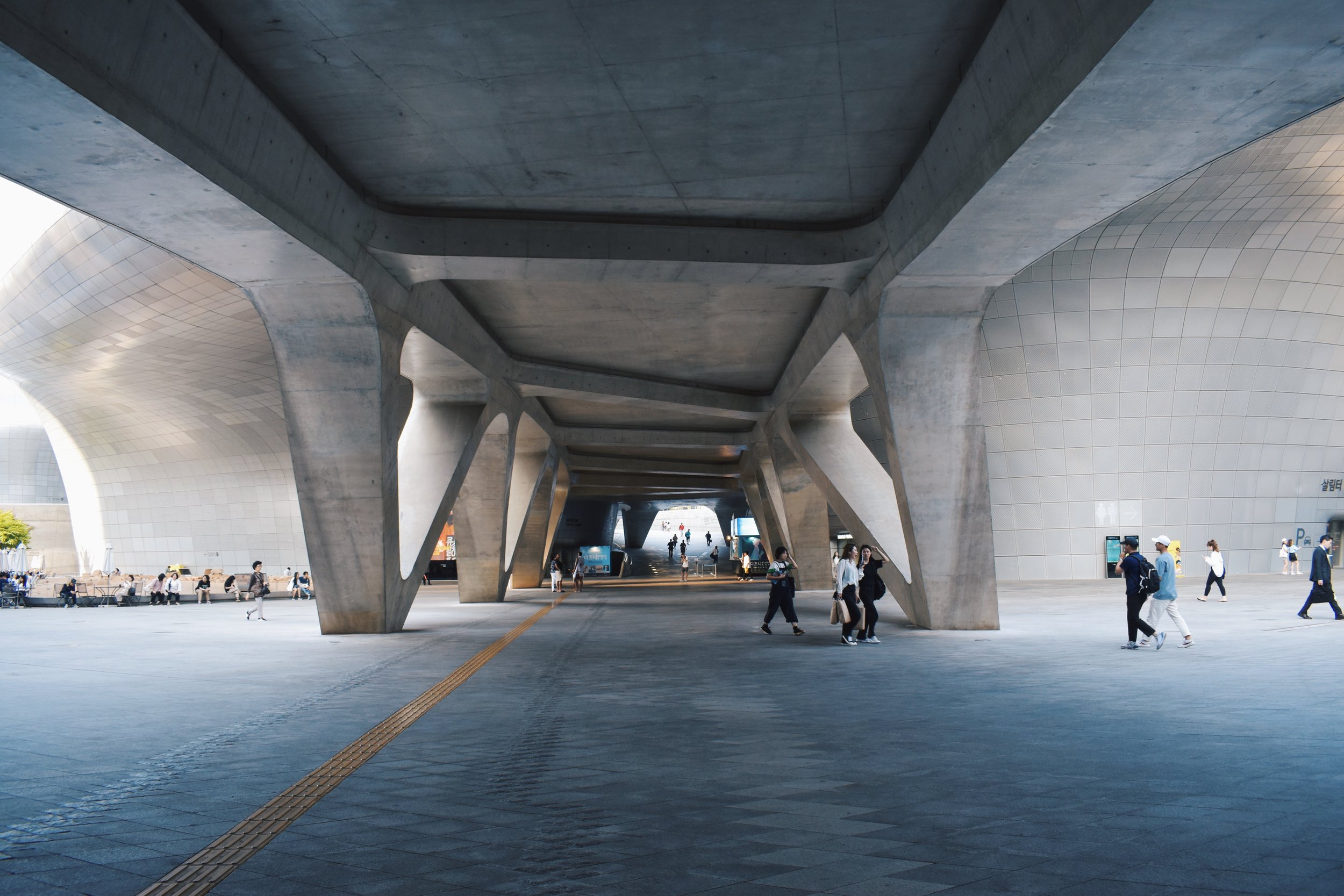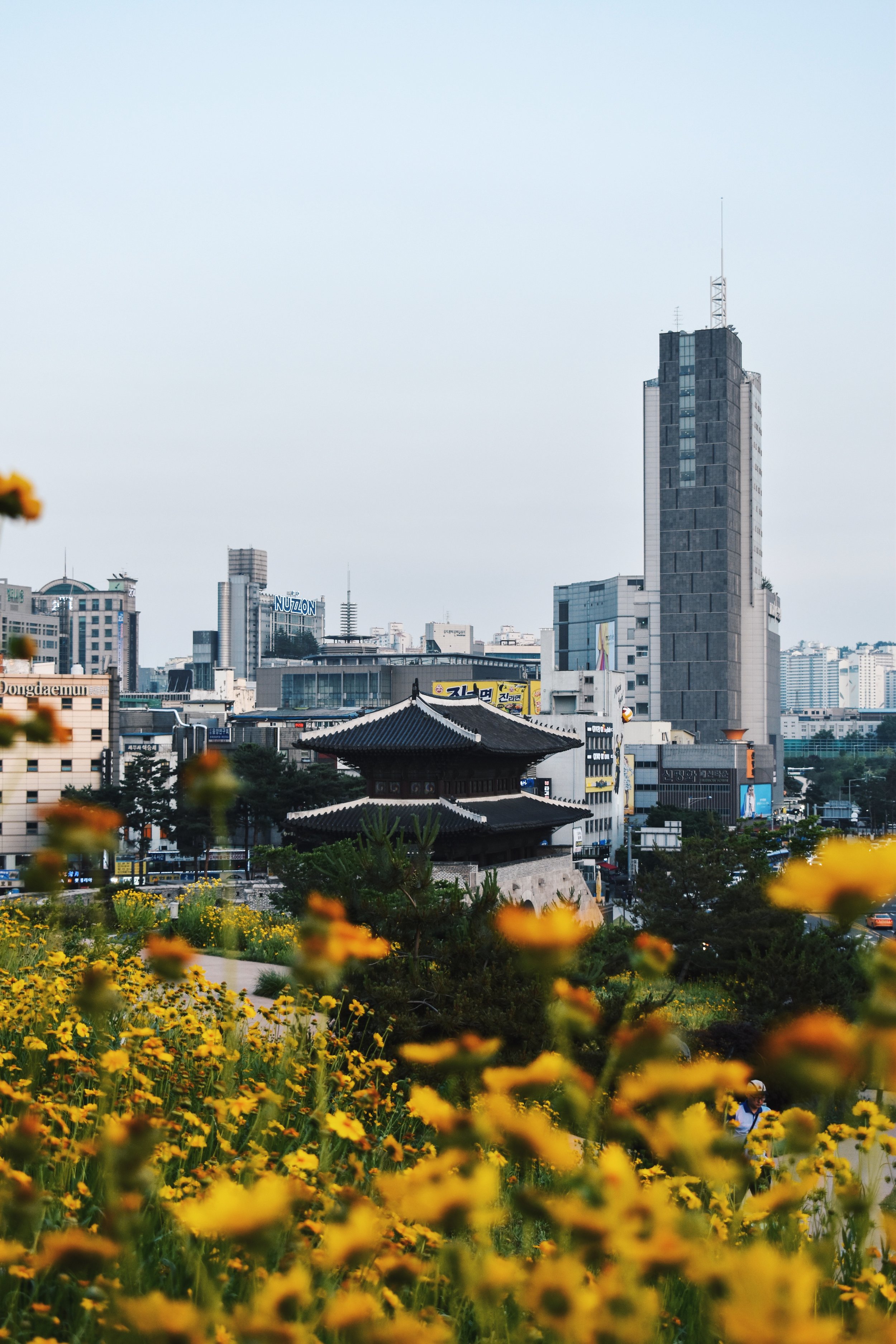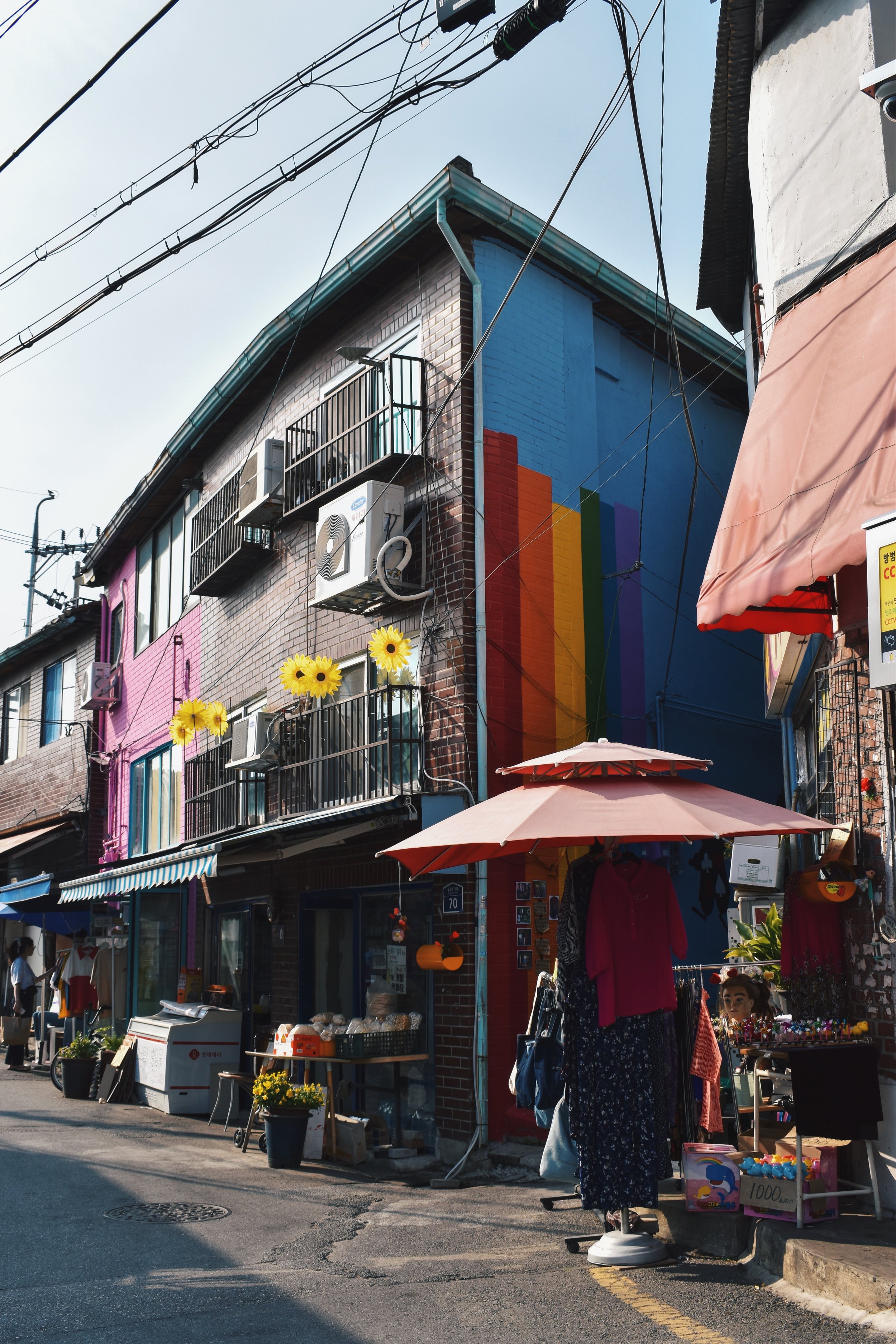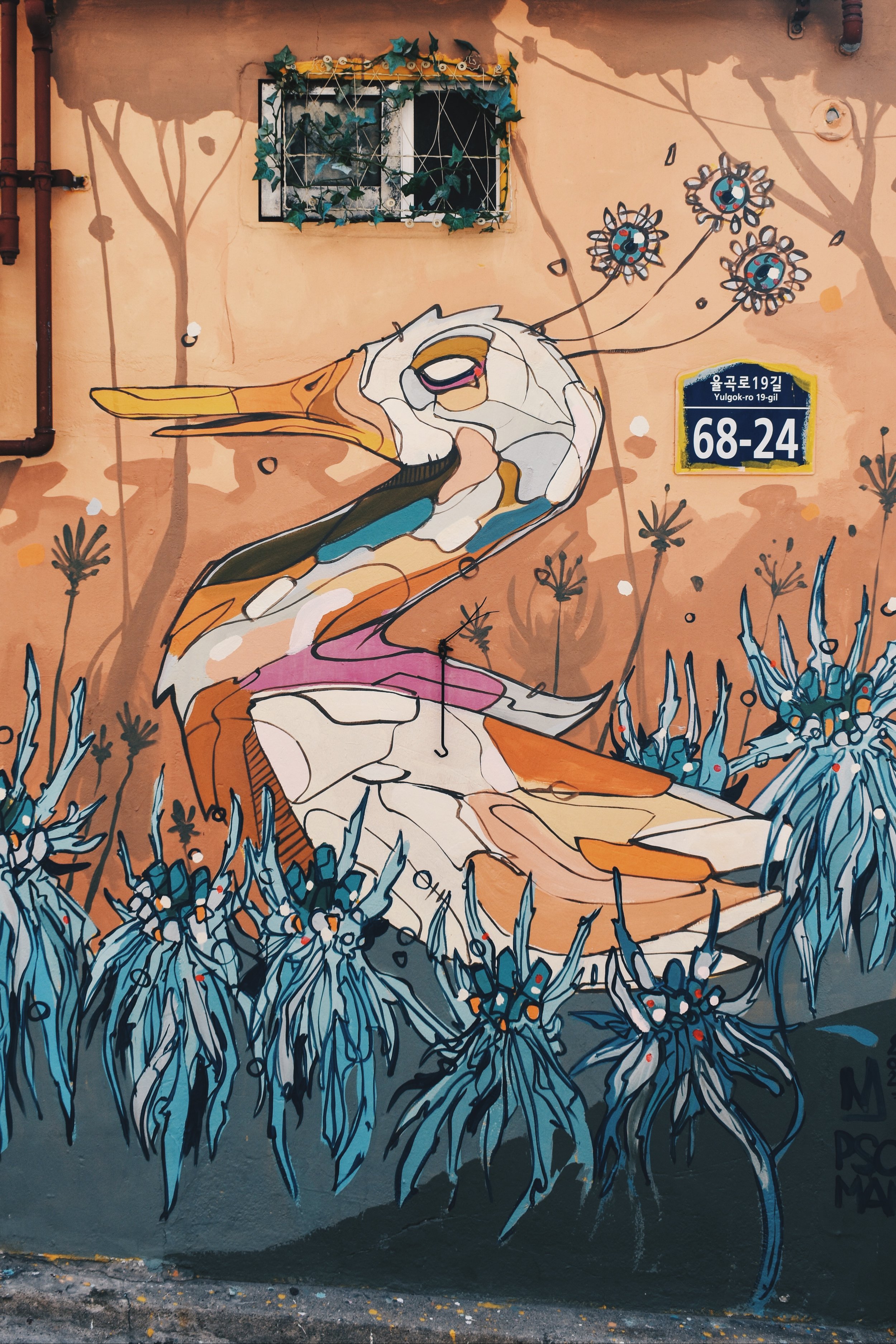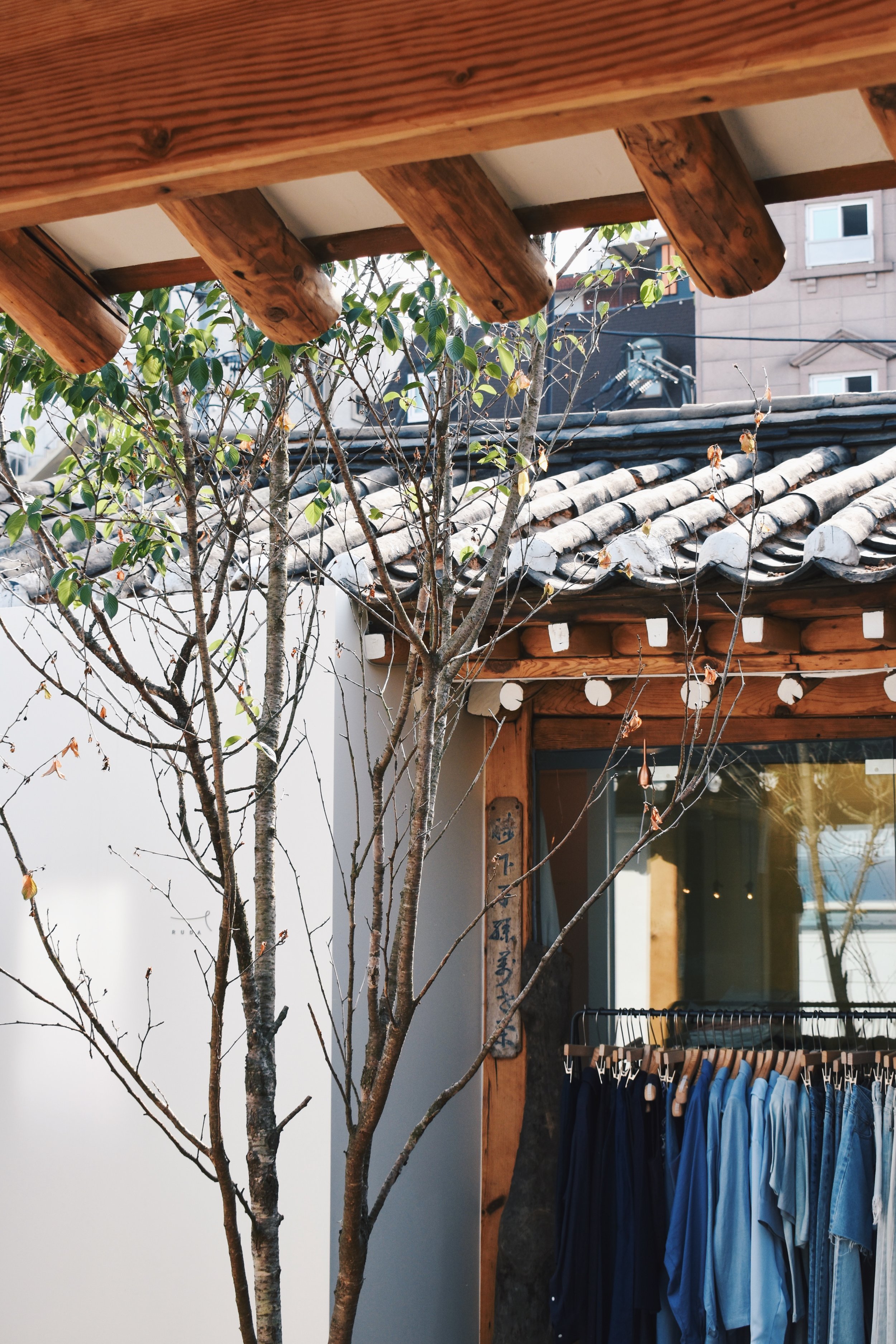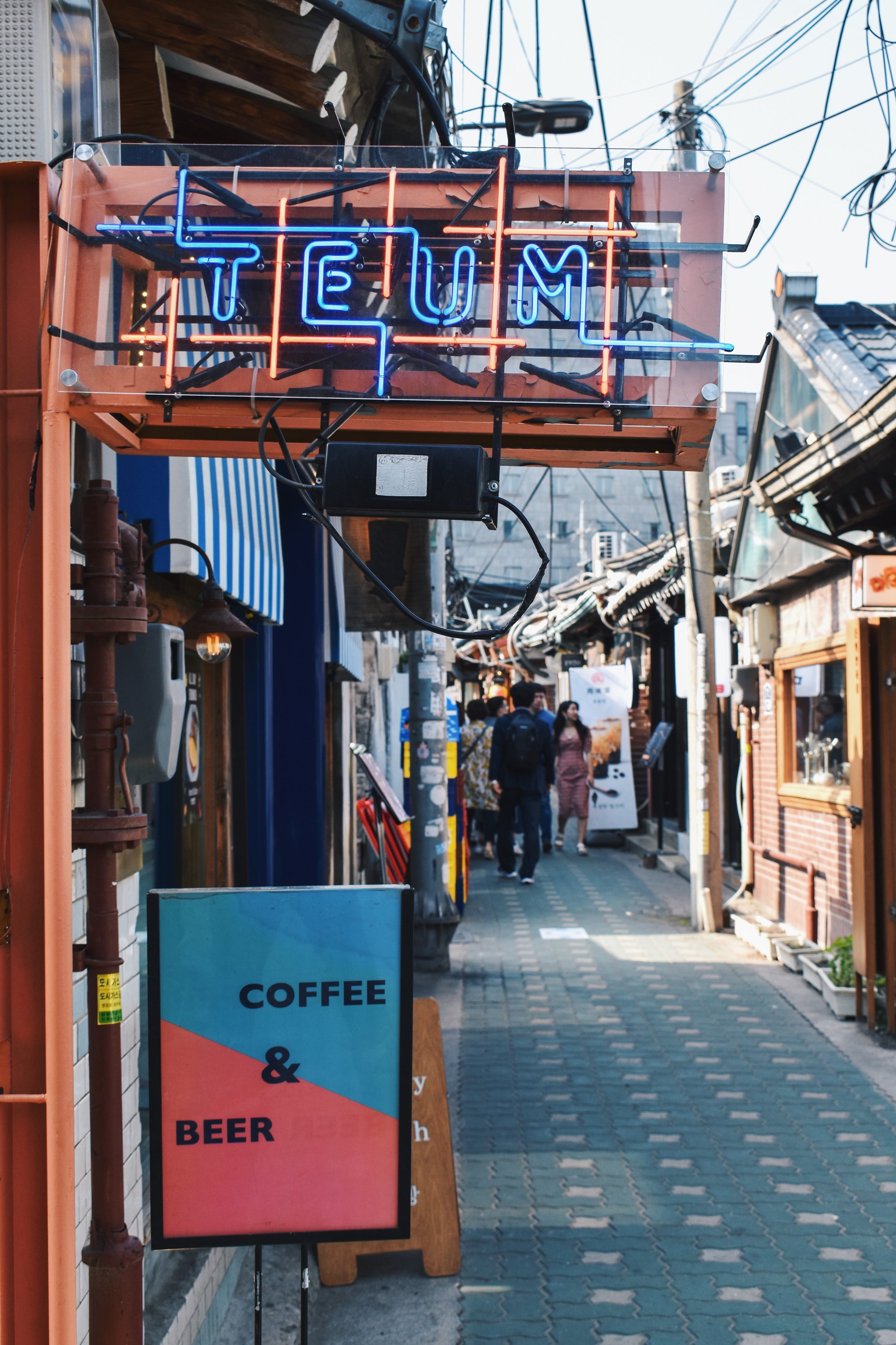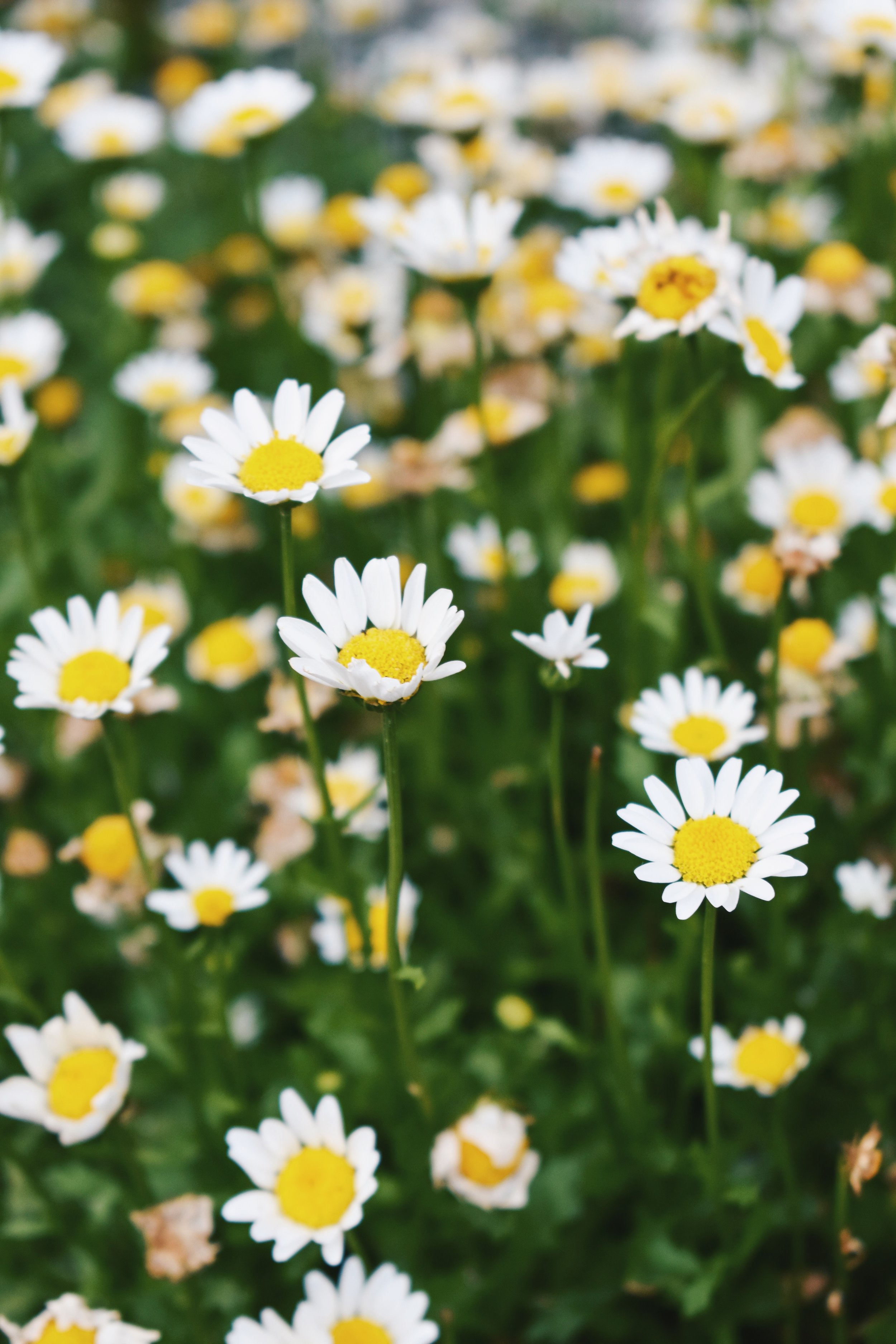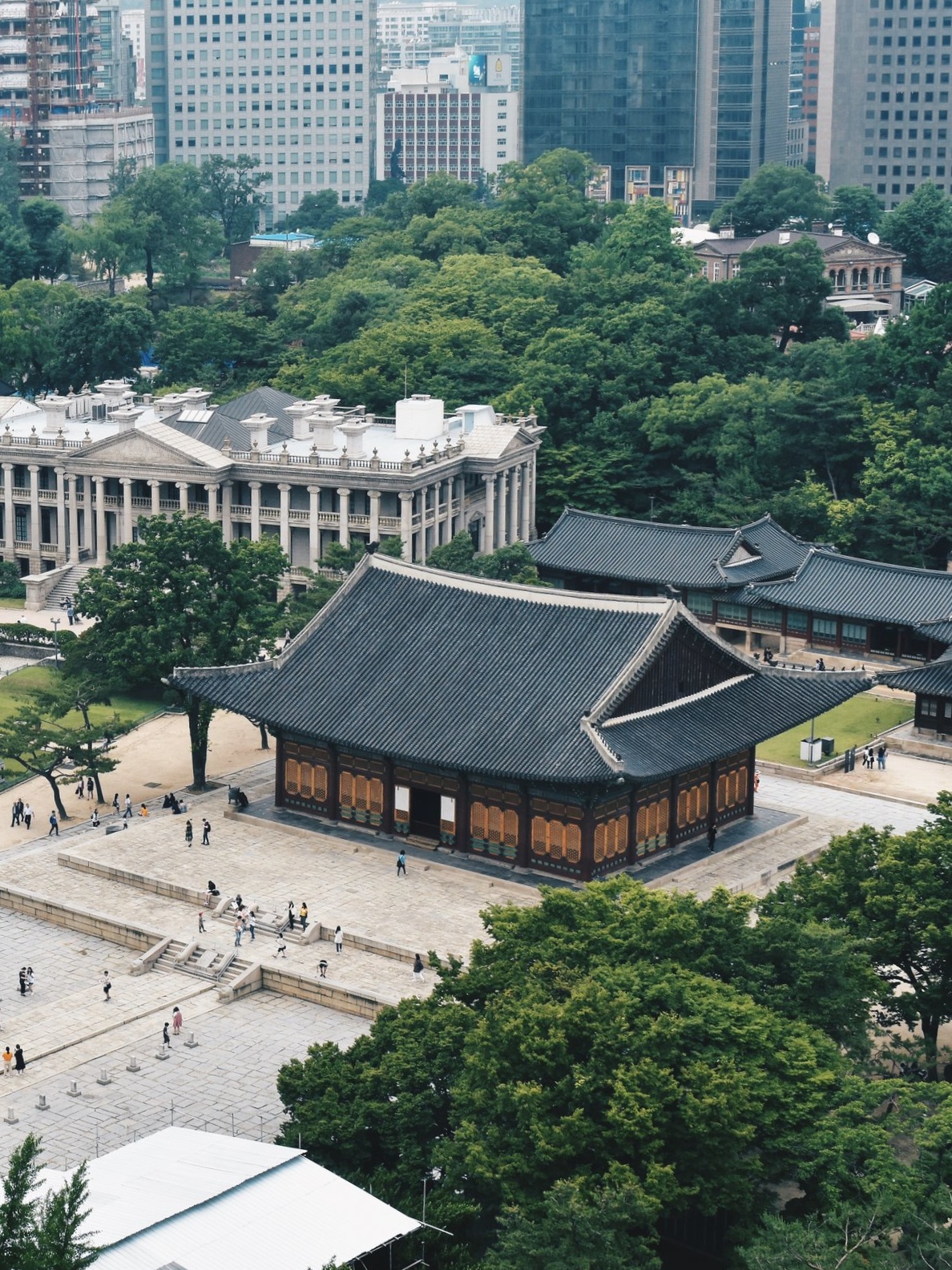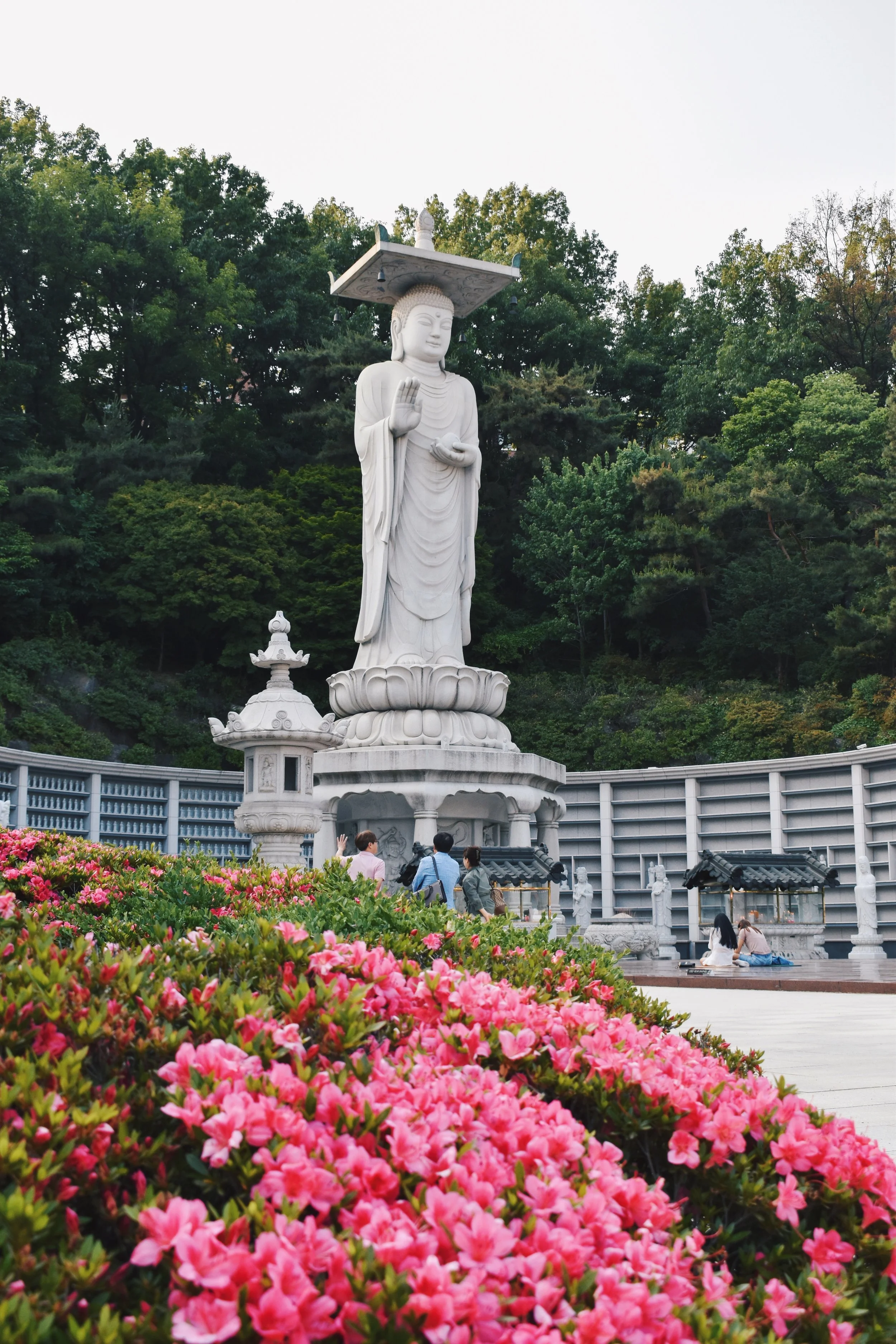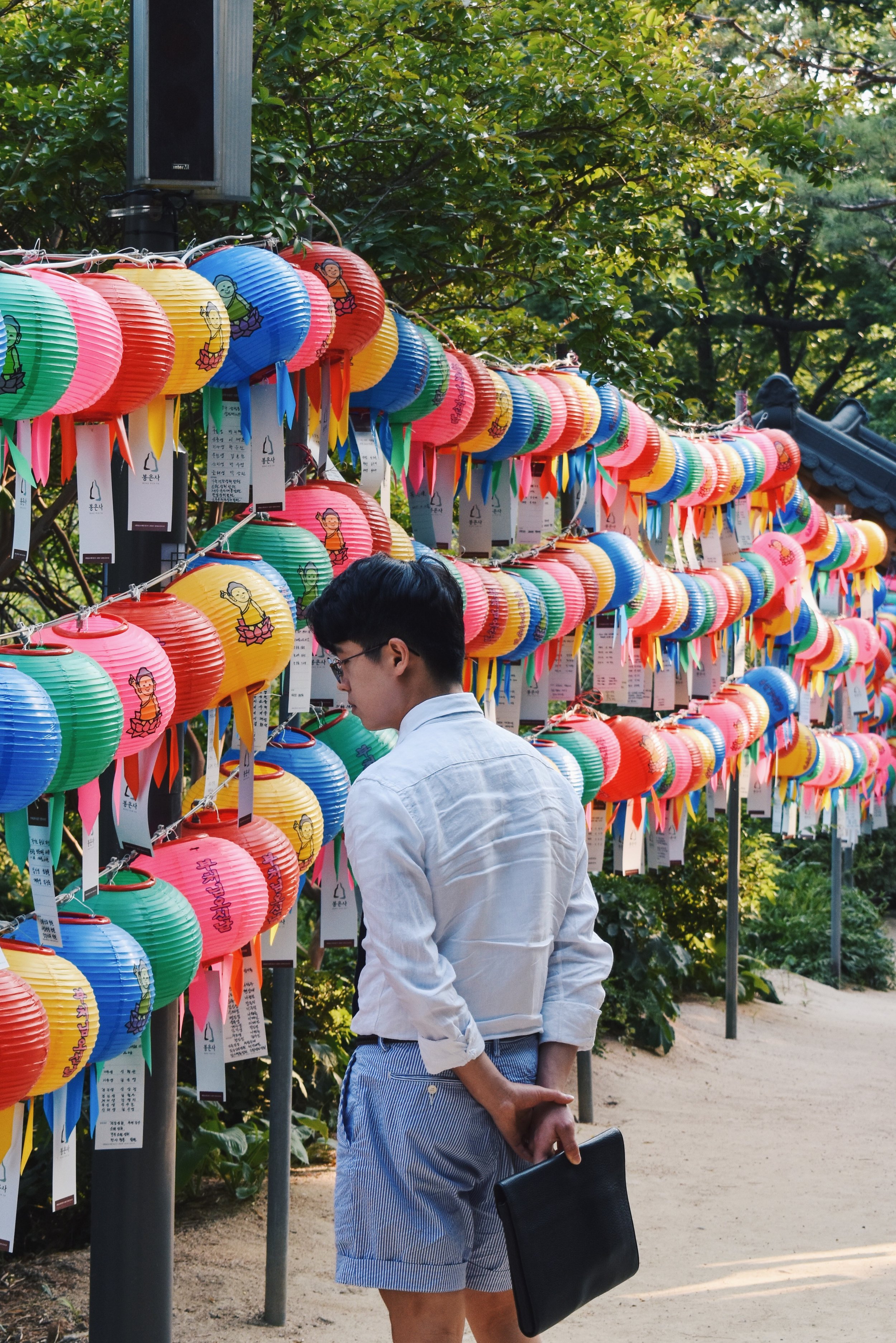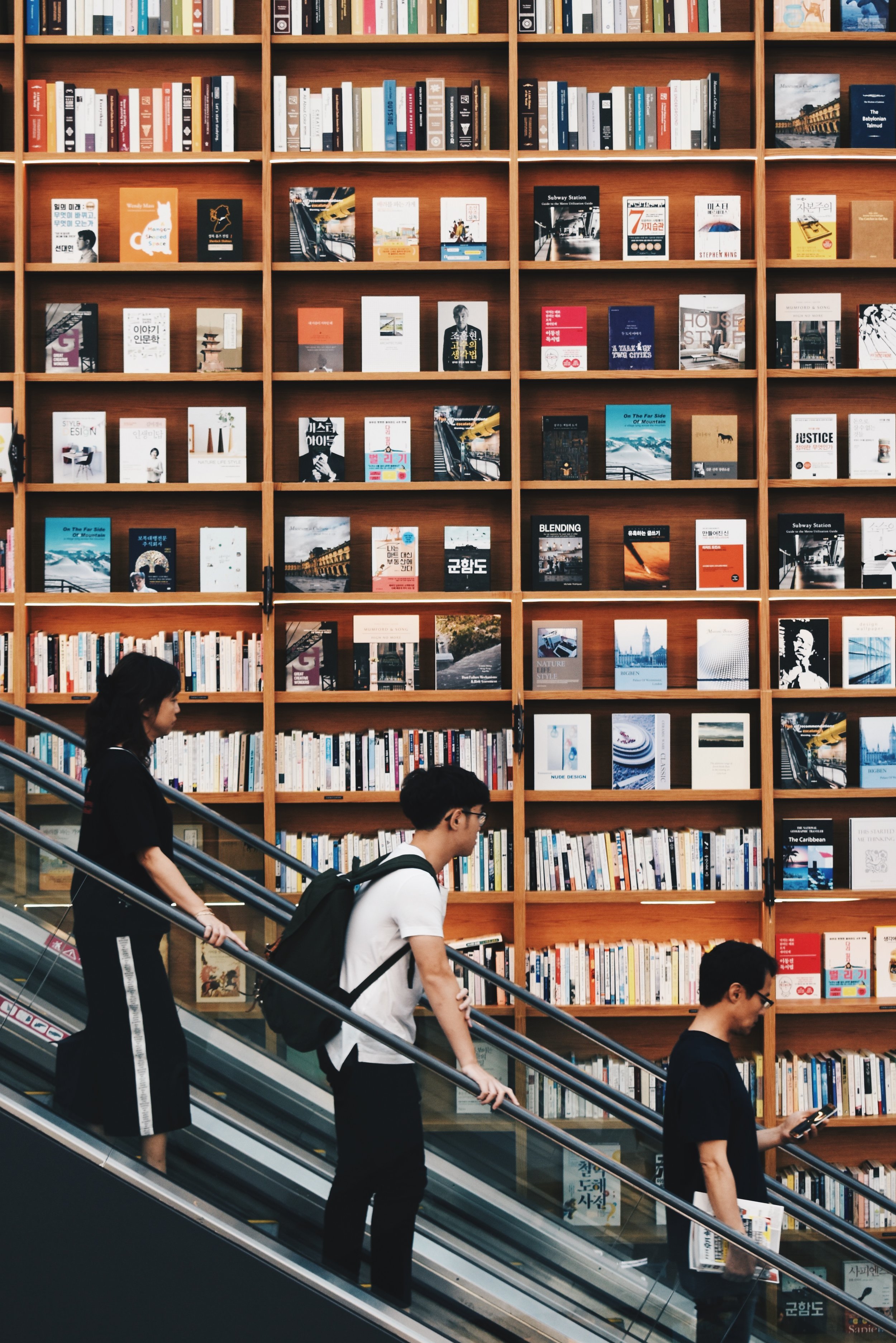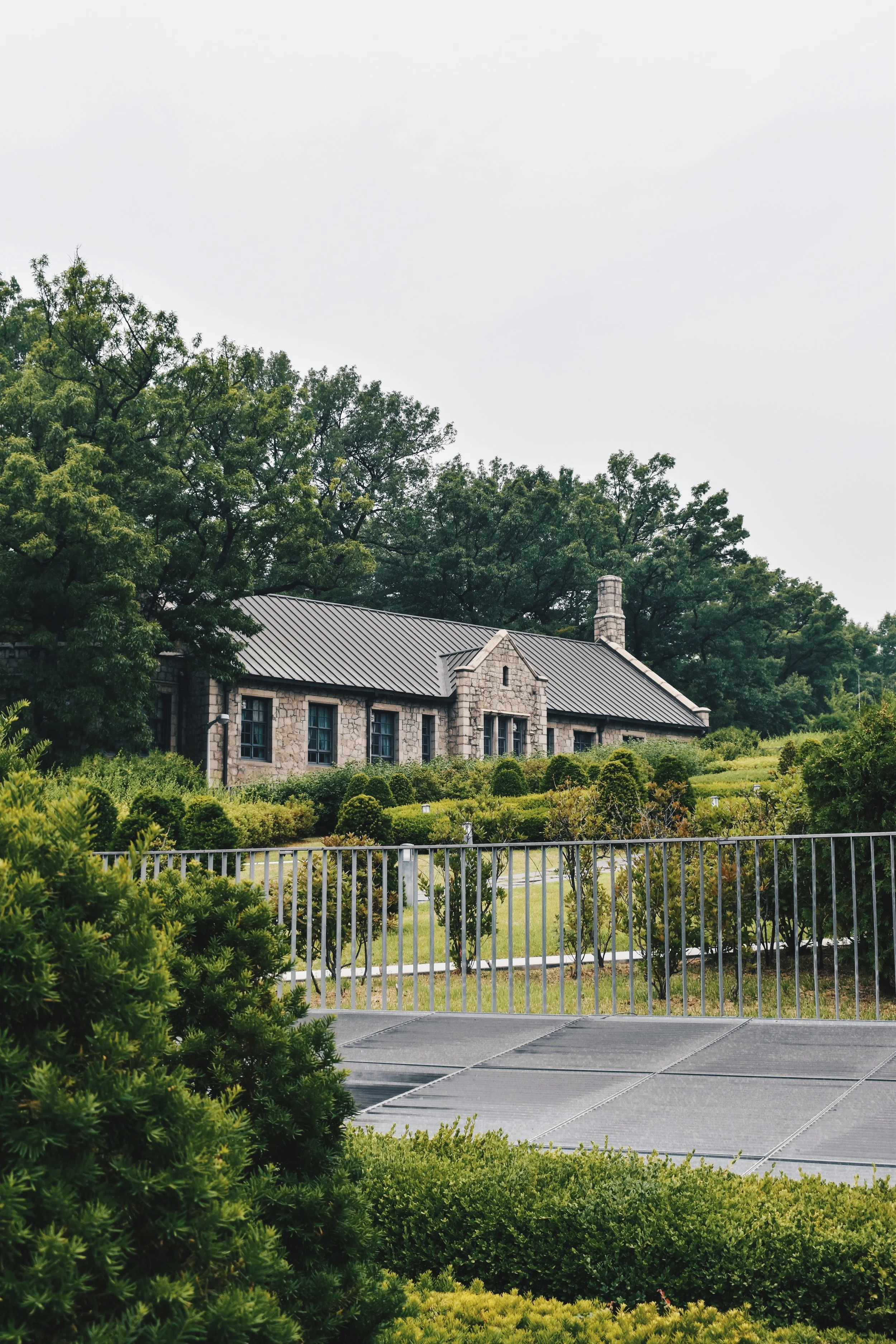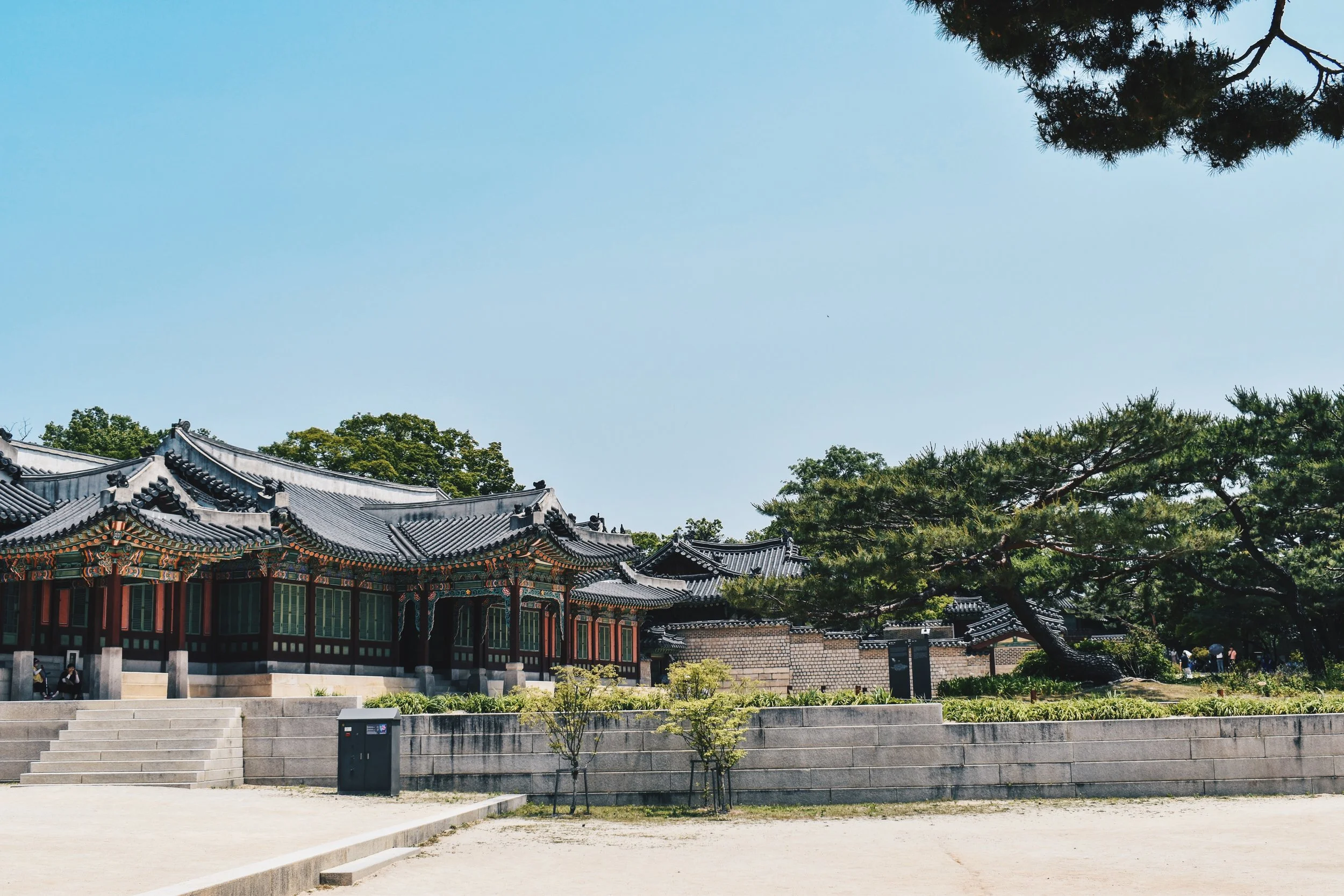What to See & Do in Seoul: A Complete Itinerary for 5 Days & More

Seoul is South Korea’s buzzing capital with an endless amount of things to do. South Korea’s become a hot destination to visit with the rise of the Hallyu Wave, but Seoul has so much more to offer beyond that. It is a city that effortlessly combines the traditional with the cutting edge. There’s plenty to do and see to keep yourself occupied for at least 5 days, and plenty more options for day trips or up-and-coming neighbourhoods should you choose to stay for longer.
Mind, take this itinerary as just a suggestion, and it’s completely fair if you don’t end up managing to cover everything. After all, Seoul is a huge city, and you shouldn’t underestimate the distances between sights. For example, it can take about an hour to get from Hongdae to Gangnam on the subway.
Read: KakaoMap or Naver Map— Which App is Best to Use for South Korea?
Read: What It Was Like on a 5.5 Hour Mugunghwa Slow Train Between Seoul and Busan
Beyond that, if you’re going to dedicate time to shopping or enjoying a cafe, you’ll find time flying with the amount of sights listed here.
However, this itinerary is doable if you’re disciplined and want to cover everything! I covered all these distances because I was travelling solo most of the time which meant I was covering a lot of ground a lot faster.
If you’d like to opt for a slower pace, just pick the sights you deem important for you to see and what you’d like to get out of your trip.
Read: Where to Stay in Seoul— A Guide to the City’s Neighbourhoods
Read: I Was Approached by Members of a South Korean Religious Cult Thrice
Day 1 (Gyeongbokgung Palace, Changdeokgung Palace Bukchon Hanok Village, Namsan Seoul Tower)
Gyeongbokgung Palace (경복궁)
There are a total of 5 palaces in Seoul, and Gyeongbokgung is commonly referred to as the Northern Palace due to it’s location in comparison with the other palaces in the city.
To date, Gyeongbokgung is the biggest palace.
If you’re beginning your day here, you can spend an entire morning exploring the palace grounds.
The palace you see today is a restored version of the original, destroyed by fires during invasions by the Japanese.
Be sure not to miss the Royal Guard Changing Ceremony which takes place daily apart from Tuesdays (the palace is closed on Tuesdays) at 10am and 2pm at the Gwanghwamun Gate which is also the main gate.
The significance of the ceremony lies in the job of the Royal Guards during the Joseon Dynasty, where guards were in charge of protecting the king by opening and closing the gates, inspecting visitors, guarding the gates and doing surveillance in the palace.
A ticket to the palace will set you back 3, 000KRW (approx. US$2.50 / S$3.50) and you’ll also be able to explore the National Palace Museum of Korea and National Folk Museum.
If you’d like to enter the palace for free, you can rent a hanbok (Korean traditional clothing) at one of the many hanbok rental stores near the palaces and Bukchon Hanok Village.
WHERE |
161, Sajik-ro, Jongno-gu, Seoul
서울특별시 종로구 사직로 161 (세종로)
Changdeokgung Palace (창덕궁)
After which, hop on Buses 109, 171, 272, 601, 710 or 7025 from Gyeongbokgung Board and ride for 5 minutes to get to Changdeokgung Palace. Either that, or take a leisurely 20 minute walk between both palaces.
Changdeokgung Palace came after the Gyeongbokgung Palace, but Changdeokgung was actually the longest serving royal residence. It is said to be the most well-preserved out of all the palaces.
The palace is known for the fact that unlike all other palaces where the surroundings were made to work with the architecture of the palaces, Changdeokgung was designed to be in harmony with the natural environment.
Your 3, 000KRW ticket will allow you in to the palace grounds, but if you’ve heard anything about Changdeokgung’s Secret Garden, note that you’ll have to obtain tickets for that separately.
Tickets to Huwon, the secret garden, will set you back 5, 000KRW, and is renowned because it was well-loved by the Joseon Dynasty kings and used for many events and functions. Today, it’s better known for it’s stunning autumn foliage.
To obtain tickets for Huwon, you have several options:
Get your tickets online 6 days in advance, capped at 10 tickets per person per day
Get to the ticketing counter on-site when the ticket office opens at 9am, capped at 50 tickets available per tour which must be used on the day of purchase
Book a special tour that includes a tour of Huwon, like this one on Trazy
Personally though, I chose to skip over this myself given the fact my June trip meant no autumn foliage, and I’m honestly alright with skipping seeing a garden I have to pay extra for, it’s up to you!
WHERE |
99, Yulgok-ro, Jongno-gu, Seoul
서울특별시 종로구 율곡로 99 (와룡동)
Bukchon Hanok Village (북촌한옥마을)
Walk 15 minutes from Changdeokgung to arrive at Bukchon Hanok Village, which isn’t the only traditional village in Korea, but it is most certainly the most famous.
Traditional houses (‘hanok’) come from the Joseon Dynasty, and provide a striking contrast between the new, modern Seoul of neon lights and skyscrapers and the Seoul of old.
Many of these houses have actually been converted into teahouses, gift shops and cafes, but there are residents that do still live here, and signs have been placed throughout the neighbourhood to remind travellers that they are in a residential space, and are therefore urged to maintain a low volume and not to intrude into personal quarters.
Touristy it may be, it is still a wonderful place to have a leisurely walk, especially if you get to see the sunset over Seoul. Part of the fun here is to get lost in the alleys and roads in this neighbourhood. Time your visit right, and the golden rays of evening light paint the neighbourhood in a beautiful hues too.
WHERE |
37, Gyedong-gil, Jongno-gu, Seoul
서울특별시 종로구 계동길 37 (계동)
Namsan Seoul Tower (남산서울타워)
End your day at Namsan Seoul Tower where you can take in a stunning view of the cityscape with the city lights at night.
Built on Namsan Mountain, you’ll find souvenir shops, cafes and coffee houses there too.
This is also where many couples get padlocks locked on the fences here.
Admission will set you back 10, 000KRW.
WHERE |
105, Namsangongwon-gil, Yongsan-gu, Seoul
서울특별시 용산구 남산공원길 105 (용산동2가)
Day 2 (Gwangjang Market, Dongdaemun Design Plaza, Heunginjimun Gate, Myeong-dong)
Gwangjang Market (광장시장)
If you only have time for one market in Seoul, make it Gwangjang Market in Dongdaemun.
Famous for it’s endless stalls of street food, you can literally find anything you’d possibly want here.
Once you’ve stuffed yourself on street food, shop the stalls of various produce, you might be able to pick up a few local souvenirs here.
The second floor features a vintage clothing arcade too where you can try out your haggling skills.
WHERE |
88, Changgyeonggung-ro, Jongno-gu, Seoul
서울특별시 종로구 창경궁로 88 (예지동)
Dongdaemun Design Plaza (동대문디자인플라자)
From Gwangjang Market, you can either hop on a bus or walk through the atmospheric Dongdaemun neighbourhood to get to Dongdaemun Design Plaza. Walking will take about 25 minutes and the bus trip will take about 20 with more than half of that time spent walking from and to the bus stops.
Dongdaemun Design Plaza, also known as DDP, is the work of the great Zaha Hadid, and the space plays host to various exhibitions, conferences, markets and other events.
I particularly loved the way the structure of the building played with the sunlight, and you’ll see many photographers trying to capture this magnificent structure from all angles.
You’ll be able to find restaurants and cafes inside too, as well as a few retail stores.
WHERE |
281, Eulji-ro, Jung-gu, Seoul
서울특별시 중구 을지로 281 (을지로7가)
Heunginjimun Gate (흥인지문)
Before leaving Dongdaemun, check out Heunginjimun Gate, one of the eight city gates along the historic city walls of Seoul.
When I was there in the beginning of June, I was lucky enough to catch some flowers in bloom at the turn of summer from the park across the street, where you’ll be able to get some stunning shots of the gate set in the foreground of the busy city.
At said park by the name of Dongdaemun Seonggwak Park, you’ll also be able to walk along the city wall, which makes for a pretty cool experience.
You’ll also be able to find the Seoul City Wall Museum here.
WHERE |
288, Jong-ro, Jongno-gu, Seoul
서울특별시 종로구 종로 288 (종로6가)
Myeong-dong (명동)
Known as one of Seoul’s main shopping districts, Myeong-dong is chock-full of tourists and shops on every street.
You’ll also be able to find international brand names here, as well as many major departmental stores like Lotte, Shinsegae, Migliore etc.
You can truly shop to your heart’s content, if you haven’t already in Dongdaemun.
You’ll find shops of any kind and endless rows of cosmetic stores, clothing stores, accessories stores, restaurants, and coffee houses etc.
Stylenanda’s Pink Hotel flagship store can be found here too, and has become a white hot favourite of Instagrammers.
WHERE |
66, Eulji-ro, Jung-gu, Seoul
서울특별시 중구 을지로 66 (을지로2가)
Day 3 (Ihwa Mural Village, Insa-dong, Ikseon-dong, Seoul City Hall Seosomun Building, Namdaemun Market)
Ihwa Mural Village (이화 벽화마을)
Located below Naksan Park, the Ihwa neighbourhood was a neighbourhood occupied by the elderly and poor families who couldn’t afford housing in the more central suburbs of Seoul, and was set for demolition.
In a bid to revitalise the district, the Ministry of Culture, Sports and Tourism stepped in and commissioned art work all around the village, which now attracts camera-wielding visitors to this hilltop neighbourhood.
Mind, the famous murals, namely the one with the koi fish and the other with the sunflowers, have been removed, due to the fact that they began to start attracting too many tourists to the point where local residents became frustrated with the influx of visitors and resulting invasion of privacy.
There are still other murals to see; just be mindful that you’re in a residential neighbourhood and not an Instagram playground built for visitors.
WHERE |
49 Naksan 4-gil, Ihwa-dong, Jongno-gu, Seoul
서울 종로구 낙산4길 4
Insa-dong (인사동)
Known as the cultural neighbourhood of Seoul, Insa-dong is a well-visited district.
You’ll find many art galleries, art centres, teahouses, and traditional restaurants, and the roads are blocked off on weekends to make more room for merchants to sell their wares and for traditional ceremonies and performances to take centre stage.
You’ll also find a handful of street food stalls here.
You can easily spend a few hours getting lost in the streets of Insa-dong.
WHERE |
62, Insadong-gil, Jongno-gu, Seoul
서울특별시 종로구 인사동길 62 (관훈동) 일대
Ikseon-dong (익선동)
If you’re feeling hungry, Ikseon-dong is just a hop away from Insa-dong, and has become a popular area of cafes, restaurants and local boutiques.
What makes this neighbourhood special is that all these stores and cafes are housed in traditional Korean houses (aka hanok).
It lends itself to a nice atmosphere, and is definitely a wonderful place to walk through regardless.
The interior of these stores, restaurants and cafes are most definitely drool-worthy, and so are the stunning alleyways.
If you’re up for some cafe hopping, try Madang Flower Cafe, Seoul Coffee or Tiger Tiger!
WHERE |
Supyo-ro 28-gil, Jongno-gu, Seoul
서울특별시 종로구 수표로28길 일대
Seoul City Hall Seosumun Building (서수문)
If it sounds odd that I’m directing you to a seemingly nondescript City Hall building, the reason for this is because the (free) observatory through the glass windows of the cafe features a stunning aerial view of one of Seoul’s palaces, namely the Deoksugung Palace.
Personally, I’ve never seen an overhead view of a palace before, and this being free felt like something cool and (slightly) different to see.
You’ll arrive at City Hall’s Seosumun Building, and once you’re in, it’s pretty well-signposted to direct you to the observatory on the 13th floor.
The lift doors will open to a busy cafe, and the large glass windows will be where seats are.
This means that if the cafe is full (which is most likely going to be the case), you’ll have to position your camera above someone’s head, so be mindful and respectful.
I have to admit though, that the turn out of your photos will largely depend on the weather.
On an overcast day in the summer, the view was cool but not as stunning as some photos I’ve seen when the foliage surrounding the palace and in the palace turn with the colours of autumn.
Not to mention that on a clear day, you’ll get incredible light closer towards golden hour.
From the exit, you can actually walk to Deoksugung as well as the Deoksugung Stonewall Road, which has historically played host to foreign embassies and dignitaries, and the architecture made me feel like I was somewhere in England rather than South Korea.
WHERE |
15, Deoksugung-gil, Jung-gu, Seoul
울특별시 중구 덕수궁길 15 (서소문동) 서울시 서소문청사 1동 13층
Namdaemun Market (남대문시장)
Namdaemun Market is said to be the largest traditional market around, with many shops selling various products.
There are several wholesale markets here, such as the jewellery wholesale market and flower wholesale market.
The market is busy at all times of day but the operating hours of different stalls are completely dependent on stall owners themselves.
Still, if you’re looking for everything from ginseng to jewellery, Namdaemun Market is a nice place to walk around.
WHERE |
21, Namdaemunsijang 4-gil, Jung-gu, Seoul
서울특별시 중구 남대문시장4길 21 (남창동)
Day 4 (Bongeunsa Temple, Starfield Library, Sinsa-dong, Gangnam)
Bongeunsa Temple (봉은사)
If you’ve seen a picture of beautiful white lanterns hanging overhead in a temple in Seoul, this is the temple.
Located in the Gangnam area, Bongeunsa Temple is a beautiful and peaceful complex just a step away from Seoul’s busy financial and business district.
The fact that so many skyscrapers and massive new age buildings surround Bongeunsa Temple is a nice reflection of the Seoul of old meeting the Seoul of new.
You can also arrange a temple stay at Bongeunsa Temple if that’s something you might fancy.
WHERE |
531, Bongeunsa-ro, Gangnam-gu, Seoul
서울특별시 강남구 봉은사로 531 (삼성동)
Starfield Library (별마당도서관)
Located in COEX Mall is another Instagrammer’s favourite— the 2 storey Starfield Library where sunlight pours in through the massive glass windows and the thousands of (real) books stacked on a shelf standing at a whopping 13 metres tall.
You can’t check any books out of the library here, and there are quite a lot of students with their heads buried in a book or glued to their laptop screens, though it isn’t the most conducive place to actually study or read due to the sheer number of people around snapping pictures.
Many try to get their perfect Instagram shots running up and down the escalators.
WHERE |
13, Yeongdong-daero, Gangnam-gu, Seoul
서울특별시 강남구 영동대로 513 (삼성동)
Sinsa-dong (신사동)
Sinsa’s Garosu-gil Road is a famous street lined with ginko trees which features clothing boutique after clothing boutique, as well as many upscale retailers and design stores.
This all contributes to Sinsa’s flair.
Many well-appointed stores such as Gentle Monster and Queenmama Market can be found here, the interiors of which are absolutely stunning.
Once you’ve done some damage to the wallet or window shopped to your heart’s content, head in to one of the many stylish brunch and coffee shops in the neighbourhood.
WHERE |
Sinsa-dong, Gangnam-gu, Seoul
서울특별시 강남구 신사동 일대
Gangnam (강남)
End your night at Gangnam, Seoul’s pulsating and cutting-edge neighbourhood.
Head in the direction of Gangnam station and explore the many streets around.
Come night fall, the streets light up and are filled with people on a evening out.
Many great places to dine out can be found here, the best of which will be bustling and stuffed with boisterous crowds of diners.
WHERE |
Gangnam-daero, Gangnam-gu, Seoul
서울특별시 강남구 강남대로
Day 5 (Noryangjin Wholesale Fisheries Market, Han River, Cheonggyecheon Stream, Ewha Women’s University, Hongdae)
Noryangjin Wholesale Fisheries Market (노량진수산물도매시장)
Noryangjin Wholesale Fisheries Market is one of South Korea’s biggest fish markets.
The market moved into the complex it occupies today in a bid to promote the fishing industry and boost the income of local fishermen.
As such, it’s said that as much as 250 to 300 tonnes of marine products are traded everyday.
The market starts buzzing at 1am, and if you’re up for it, you can come at 3am to witness a live auction.
The general areas of the market close only from 10pm to about 1am or so.
WHERE |
674, Nodeul-ro, Dongjak-gu, Seoul
서울특별시 동작구 노들로 674
Han River (한강)
Given how the river flows through the city, this water artery offers a lot of activities for the visitor.
There are plenty of opportunities for water sports such as kayaking, windsurfing, wakeboarding, flyboarding, water skiing etc.
Fancy something a little less adrenalin-pumping?
Rent a bike for a couple hours and take a pleasant cycle on the river banks.
Fancy something even more easygoing?
You can even go camping or picnicking at the river.
Of course, you can also go on a river cruise. Some operators even promote a dinner package on board.
Along the Han River, there’s also the famous Banpo Bridge Rainbow Fountain water show, which looked great in pictures but was admittedly a little underwhelming when I visited. The lights aren’t that strong and therefore do not quite illuminate the water streams the way you might have seen on the Internet. On a windy night, the water streams blow in the breeze rather haphazardly too.
WHERE |
290, Yeouidong-ro, Yeongdeungpo-gu, Seoul (Yeouido Dock to get the Han River Cruise)
서울특별시 영등포구 여의동로 290
Cheonggyecheon Stream (청계천)
Don’t miss the Cheonggyecheon Stream that winds through the city too, beginning from Cheonggye Plaza.
The stream stretches a whopping 11km, created as part of an urban renewal project.
It was initially covered by an elevated highway after the Korean War, which was eventually removed again to showcase the stream.
You’ll see many couples on dates here, and is a popular place for many visitors and locals alike, especially on hot summer nights.
If you’re in Seoul in November, be sure not to miss the two week long Seoul Lantern Festival which feature thousands of lanterns that light up on the stream.
If you’re around closer to Christmas, the Christmas installations lighting up the stream are unmissable too.
WHERE |
Changsin-dong, Jung-gu, Seoul
서울특별시 종로구 창신동
Ewha Women’s University Fashion Street (이대 패션거리)
I suppose I’m including this only for the fact it’s already high up on many to-do lists in Seoul, but truth be told, I wasn’t that hot on the campus visit for a number of reasons.
Many come to the campus to take a photo with the old English style buildings and the staircase in the middle designed by Dominique Perrault Architecture. Ewha also boasts Korea’s first underground campus building where you’ll see many students, well, studying.
Outside of the campus, many come here to shop at the Fashion Street.
It was nice to see what the hype was about, but I wouldn’t make a special trip to the university if I was strapped for time.
WHERE |
10, Ewhayeodae 1-gil, Seodaemun-gu, Seoul
서울 서대문구 이화여대1길 10 (대현동, 예스에이피엠)
Hongdae (홍대)
A popular hangout spot for Seoul’s youth, also thanks to Hongik University just a stone’s throw away, is the bustling neighbourhood of Hongdae that stays busy all through the night.
Shopping here naturally skews younger, and you’ll see many young boutiques and labels hot on the pulse of what’s trending.
Street performances and festivals make Hongdae a nice place to hang around, and it’s always nice to see people putting their blood, sweat and tears into busking and performing in the streets.
You won’t struggle to find food here, nor is there a lack of shopping opportunities. If you’re looking for a big night out, Hongdae has quite a few joints too.
WHERE |
20, Hongik-ro, Mapo-gu, Seoul
서울특별시 마포구 홍익로 20 (서교동)
Day 6 and Beyond (Other Neighbourhoods, Day Trips)
5 days is a packed itinerary to see Seoul’s highlights, but if you’re looking to spend more time in Seoul, there’s certainly a lot of other things to do and see to keep you busy.
The itinerary above covers a lot of distance, and you can do it all provided you don’t give in to whiling the entire afternoon away at one of the many stores or cafes, which is far too easily done.
Either way, it’s really only a suggested itinerary of the important sites to see, of which there are plenty more. And if you’ve got more than 5 days, you can stretch those sights you didn’t manage to cover into the later days.
If you managed to cover it all, read on to find out what else you can see or do!
Other Neighbourhoods
Itaewon is populated by many immigrants, which is reflected in it’s dining scene. You’ll find many cuisines right next to each other, and is a nice place to have a stroll, or if you’d like a break from Korean food.
An up-and-coming neighbourhood dubbed the Brooklyn of Seoul is Seongsu, and features many cool stores as well as some of Seoul’s busiest cafes and coffeehouses.
However, the vibe here is distinctly more industrial, which extends to the decor of these cafes.
Instead of pristine walls and perfectly manicured indoor plants, cafe onion for example, is housed in an old-looking warehouse-type building, complete with peeling paint and uneven ground.
Daelim Warehouse, or CO: LUMN doubles as a cafe and small art gallery.
Stepping in, you’ll feel like you’re entering a factory that features an indoor garden.
On the menu, you’ll find pizza, pasta, alcohol, caffeinated and non-caffeinated beverages.
Mains here go for 15, 000KRW and up, and you can easily expect to spend about 25, 000KRW to 30, 000KRW per person.
Day Trips
Seoul offers plenty of day trip options, some connected to the capital’s extensive subway system.
For example, Incheon isn’t just a gateway into Korea via Incheon’s International Airport. Reached by an hour from the heart of Seoul on the subway, Incheon is actually the third biggest city in South Korea. You’ll get to see a proper Chinatown, and enjoy delicious Chinese-Korean dishes such as jjajangmyeon and dumplings.
Read: A Day Trip From Seoul to Incheon: From Chinatown to Fairytale Villages to City Skylines
Paju is a storybook escape from Seoul with it’s themed villages designed to look like pristine French towns, as well as art galleries and bookstores in the form of Heyri Art Village. Bus 2200 from Hapjeong station will take you to Paju in a matter of 30 to 40 minutes. Paju is close to the border separating North and South Korea, and interestingly, the view out of the bus gives you a glimpse of the barbed wire fences and watchtowers.
If you fancy going hiking (remember that the Korean peninsula is mountainous), Bukhansan National Park is where you’ll want to be. The most popular hiking trail is the Bukhansanseong Course for day trippers from Seoul.
Suwon is the capital city of the Gyeonggi Province, and features a UNESCO World Heritage Site in the form of Suwon Hwaseong fortress, a city wall that circles the entire old city of Suwon. From the highest points, you can clearly see the fortress dividing the city of old from the city of new that grew outside of the city walls. You can hike the entire wall if you choose to do so, but remember that you’ll be under the beating rays of the sun for hours and hours on end, as well as climbing stairs up and down the wall. A complete round will easily take you an entire afternoon, if not more.
Read: A Day Trip from Seoul to the Historic City of Suwon
Of course, many people come to visit the Demilitarised Zone (DMZ) between the two Koreas, where tensions still exist today. Search up DMZ tours to visit this important and historical area. You cannot enter the DMZ via public transport.
Nami Island and Gapyeong are also typical day trips for travellers to Seoul, which means it has become incredibly touristy and busy, making enjoying the place without a horde of other travellers rather difficult, especially if you’re opting to go it on your own (you’ll have to leave Seoul very early and time your trip properly so you don’t miss the bus). I’d advise to do it in the Spring or in the Autumn, which might make for beautiful pictures with the foliage.
There are of course, far, far more places to visit on a day trip, which would be impossible to list, especially with the high speed KTX trains around whisking you to another destination in no time at all. But I’d opt for not going too far, especially to somewhere like Busan, located on the other end of the peninsula and a massive city with plenty to do and see.
Read: What to See & Do in Busan— An Itinerary for 3 Days and More
Read: Where to Stay in Busan— A Guide to the City’s Neighbourhoods






